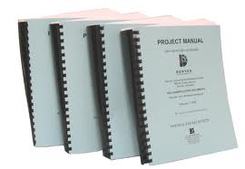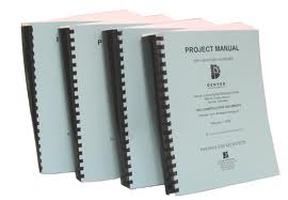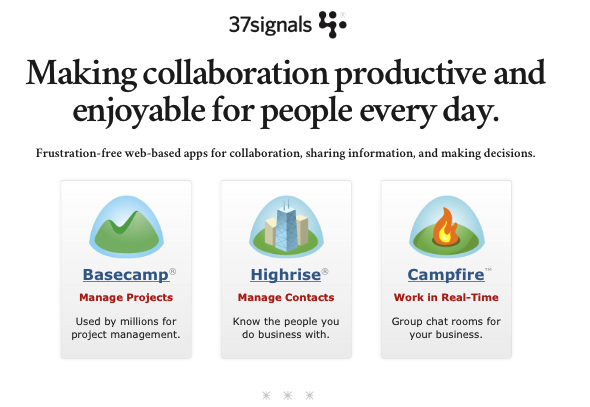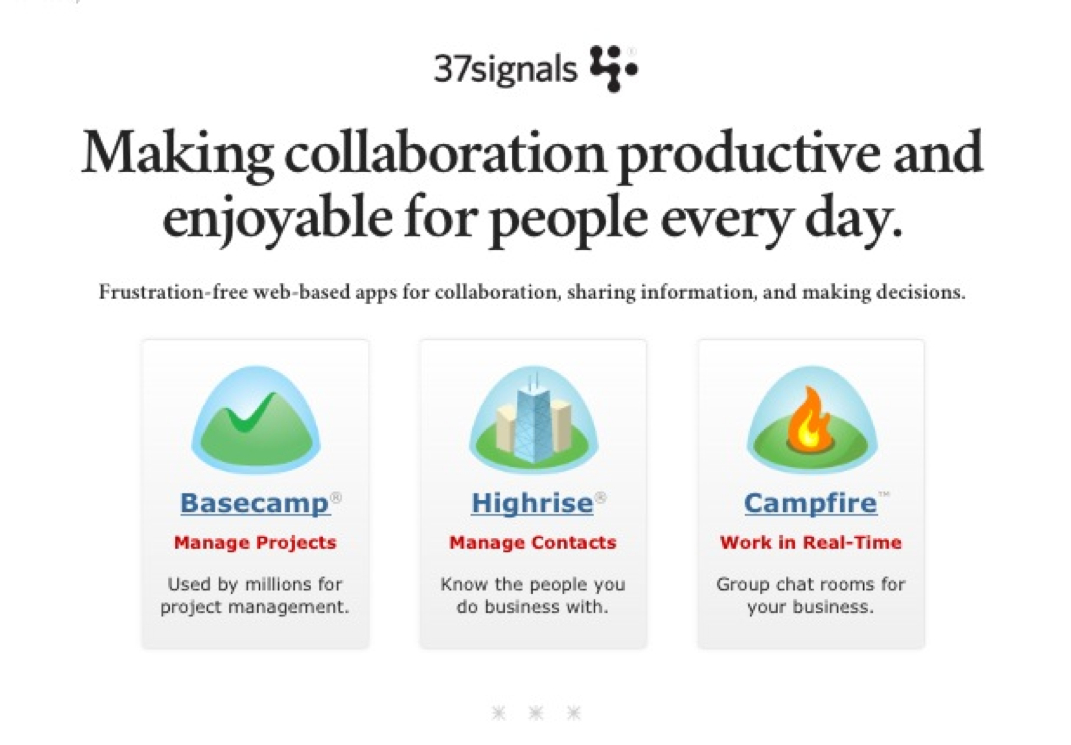 This is a helpful report you can learn from. Although it is a couple of years old, I don't think the ideas have aged at all. Mike Schultz at RainToday.com is a good source of sales advice. Over the years, I have found that the best way to absorb information is to pay attention to it when you notice it. My theory is that noticing it is an indication that you are receptive to that type of learning at the moment. Even if you are too wrapped up right then, bookmark or copy or 'Instapaper' it for consumption later. Conversely, when you sign up for a seminar, webinar, or follow someone else's suggestion (like now), you are less likely to make the information your own because it wasn't your attention that put it in front of you. Depending on how you like to do things, you might download this report and file it away, bookmark RainToday.com or simply remember that you found it here.
SIGNAL VS. NOISE January 7, 2013
Ignore details early on Jason Fried There’s a lot of talk about how important details are. But what’s often left out of the discussion is timing. Details and timing are intimately related. God, the devil, beauty, perfection, precision – these aren’t the only things you’ll find in the details. You’ll also find stagnation, disagreement, meetings, and delays. These things can kill morale and lower your chances of success. How often have you found yourself stuck on a single design or code element for a whole day? How often have you realized that the progress you made today wasn’t real progress? This happens when you focus on details too early in the process. There’s plenty of time to be a perfectionist. Just do it later. Don’t worry about the size of your headline font in week one. You don’t need to nail that perfect shade of green in week two. You don’t need to move that “submit” button three pixels to the right in week three. Just get the stuff on the page for now. Then use it. Make sure it works. Later on you can adjust and perfect it. Details reveal themselves as you use what you’re building. You’ll see what needs more attention. You’ll feel what’s missing. You’ll know which potholes to pave over because you’ll keep hitting them. That’s when you need to pay attention, not sooner. (Reprinted from Getting Real, The smarter, faster, easier way to build a successful web application.) Jason Fried
SIGNAL VS. NOISE January 2, 2013
Everything is not equally good When talking shop, there’s a natural tendency to avoid the drama of confrontation by relegating all disputes to Your Mileage May Vary. If we can declare all approaches and techniques to be of value only “under certain circumstances”, then we can avoid the hard work of finding the better alternative and merely stop at different. I don’t think this serves anyone. Well, that’s not entirely true. It supports the ego of the person proposing the bad idea. It also helps the ego of anyone who bought into it. But it doesn’t help the world move forward to hoist up every bad idea as “just another option”. Of course, you can’t stop this from happening. Not least because people differ on what’s a bad idea. And that’s fine! There will always be different groups advocating for different things. But as individuals, we shouldn’t be afraid to impart our opinion on ideas. Ideas are meant to be attacked, torn apart, and put back together again. You may well want to shield your idea from the harsh sunlight at first, but by the time it’s ready to meet the world, it should also be ready for rain or shine. Bad ideas are supposed to wither under the stress of criticism. Hell, even good ideas are supposed to wither in the winter of their life. Precious few ideas are immortal, and even those should be constantly tested to ensure their hearts still beat vibrantly. The reason we get rid of bad ideas is to make room for new ones. If your catalogue of techniques is brimming with YMMV charity cases, you’re less likely to come up with or entertain new entrants. Hoarding bad ideas that might come in handy when the full moon shines purple is just that. Hoarding. The flow of new ideas is far more important. Throw ‘em up, bat ‘em out. Declaring “oh well, that didn’t work out like I thought” is an incredibly liberating feeling. I might even go as far as to say it’s motivating. It’s like clearing your desk or emptying your inbox. Ahh, a fresh start! It takes a strong ego to let go of bad ideas that you originated, but rarely people will think less of you for it. Which is more than can be said of clinging endlessly to bad ideas past their due. David  Over the years we have bid a lot of projects both privately and publicly. We have also documented our process to avoid 'reinventing the wheel'. The following describes the steps in our process. Several of the documents or forms that we use are downloadable by clicking their name. Perhaps this will be helpful to you. Questions? Use the Comments to ask... See PREPARING TO BID A PROJECT for preliminary tasks. DURING BIDDING You have your project 'on the street'. Now what do you need to do?
It is extremely rare to go through a bidding period without at least one addendum. It isn't unheard of to issue some of the documents by addendum. That isn't recommended because coordination and completeness of the documents can become awkward. Your goal is to give the bidders a clear idea of what is required of them. Addenda invariably get ignored and that causes other problems for everyone. The last addendum must be received at least 2-3 days before bid due date or you should postpone the due date in the addendum. The timing and method of delivery of any addendum is often covered in the (Owner provided!) Bidding Documents, so make sure you comply. PREPARATION FOR THE BID OPENING (PUBLIC)
BID OPENING PROCEDURES (PUBLIC)
PREPARATION FOR THE BID OPENING (PRIVATE) See the description of the preparation for a public bid opening above. A private opening would take place in the architect's or the client's office and is informal. The same process is followed without an audience of bidders. BID OPENING PROCEDURES (PRIVATE) See the description of the Bid Opening Procedures for a public bid opening above. A private opening is as informal as you want to make it, but most of the steps still apply. Since the bidders are not present, you can expect a flurry of inquiries within an hour or so of the bids being due. Decide with your client what results and when the results will be disclosed. Even if it isn't the actual results, I suggest that you make the plan for disclosure available if you haven't done so yet. POST BID ACTIVITIES
Once the Owner/Contractor agreement is signed or a Notice To Proceed is issued, you are ready to start the Construction Administration phase of the project.  Over the years we have bid a lot of projects both privately and publicly. We have also documented our process to avoid 'reinventing the wheel'. The following describes the steps in our process. Several of the documents or forms that we use are downloadable by clicking their name. Perhaps this will be helpful to you. Questions? Use the Comments to ask... PRELIMINARY TASKS These tasks should have been completed in earlier design phases. Verify that they have been.
PUBLIC VS. PRIVATE The main differences between public and private bidding is 1] who is permitted to bid and 2] how documents are distributed. Who to permit to bid. For public bidding you cannot restrict who bids except to place bonding requirements (often required by regulations) and minimum experience requirements on the potential bidders. For private bidding, the bidders should be by invitation only. Invite only firms you know can complete the project satisfactorily and let their bids decide who will be awarded the project. Three to six bidders is ideal. The more bidders, the less enthusiasm for bidding. How documents are distributed. For public bidding it is fairly common these days to make the documents available at cost to whoever wants them. Alternatively, you can require a deposit (about 150% of actual cost) which is returned to the bidder when he returns the plans. Plans are usually placed with plan rooms also who provide a notification service to contractors. For private bidding, you would distribute documents the same way except that you might just give the documents to the bidders in recognition of the invitational nature of the bidding. You would not place the drawings with plan rooms unless your invited bidders want to do that. The reason for no plan rooms is that uninvited bidders will submit bids, thereby undermining the concept of only pre-qualified bidders, any of which you would be happy to work with. Remember the old saw: "The low bidder is the guy who made the biggest mistake." TASKS AT THE START OF THE BIDDING PHASE
DISTRIBUTING DOCUMENTS There are three ways in which to distribute the Bidding Documents to the bidders depending on the technology available to you (and that the Owner's process permits you to use). The TRADITIONAL method is to print multiple sets of drawings and distribute them from the architect's office. The architect collects deposits or payments for the bidding sets and track contact information about the bidders for issuing addenda. As you might imagine, this is a big, disruptive task. The MODIFIED TRADITIONAL method is to print bidding sets as needed and distribute them from the reproduction house, who tracks information about the bidders and issues addenda and returns deposit (if any). This delegates the whole process; and the only drawback is that you are responsible to the Owner, but a third party is taking care of the task without oversight. The ELECTRONIC PLAN ROOM is the ideal solution because it mimics the Modified Traditional method but everything is documented online where you can monitor the process. See BIDDING ACTIVITIES continuation article (coming soon) for tasks during and after bidding. |
x
Archives
February 2024
Categories
All
|
Architekwiki | Architect's Resource | Greater Cincinnati
© 2012-2022 Architekwiki
© 2012-2022 Architekwiki








